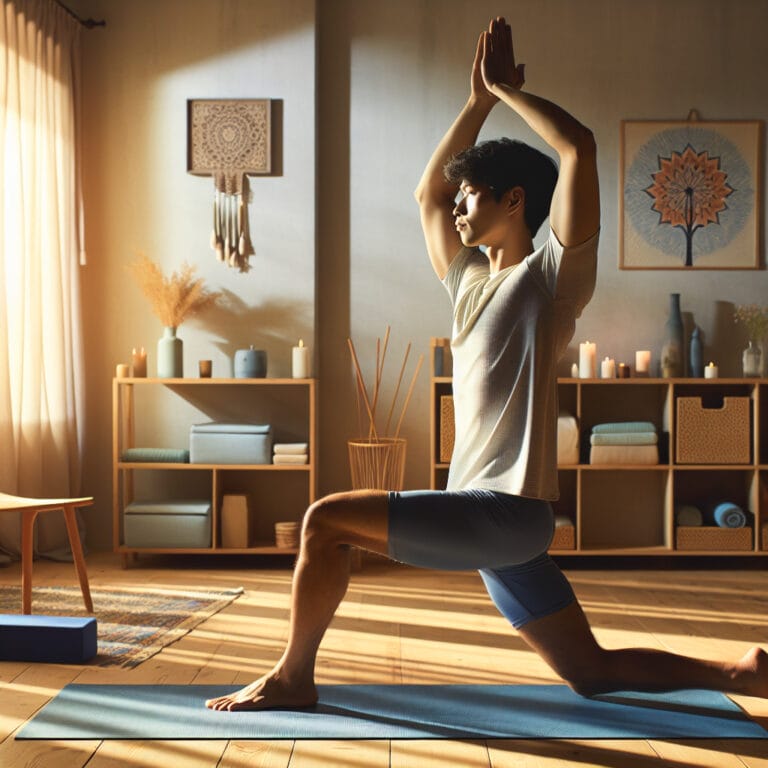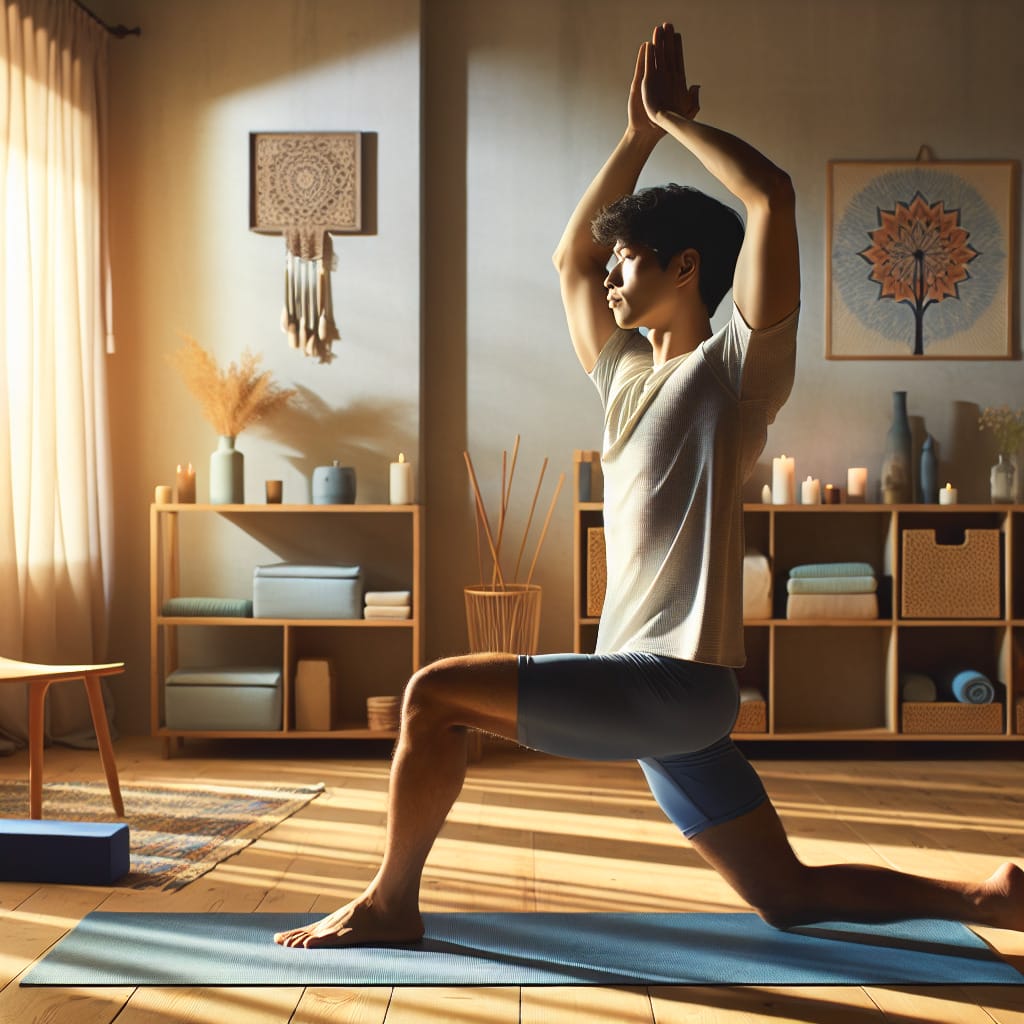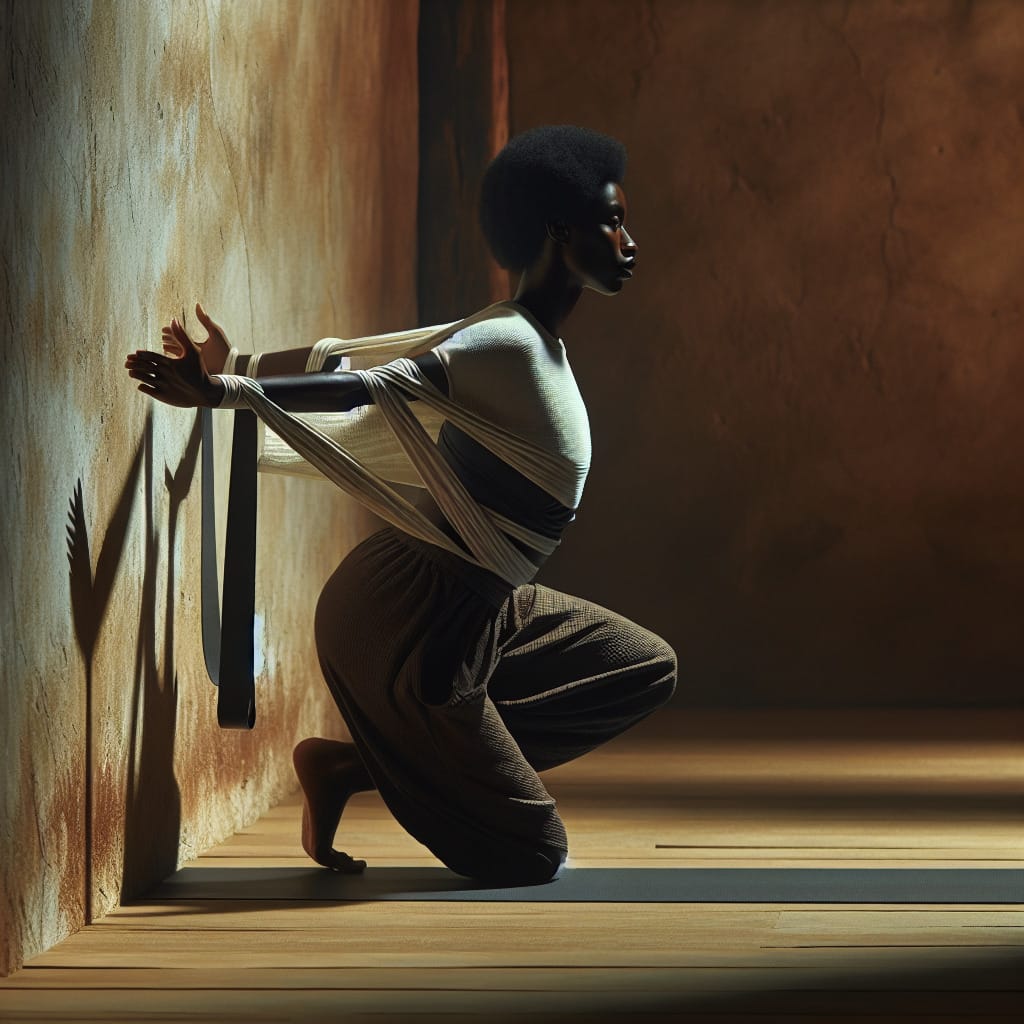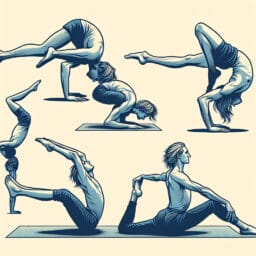
Master the Eagle Pose: A Comprehensive Guide to Eagle Pose in Yoga
Table of Contents
- Introduction
- Understanding the Eagle Pose
- Preparatory Poses for Eagle Pose
- Step-by-Step Guide to Eagle Pose
- Common Mistakes and How to Avoid Them
- Modifying Eagle Pose for Beginners
- Advanced Variations of Eagle Pose
- Conclusion
- Frequently Asked Questions
Introduction
The Eagle Pose, known as Garudasana in Sanskrit, holds a unique place in the vast realm of Yoga. This challenging and invigorating pose is steeped in ancient philosophy, with its origin tracing back to the mythical king of birds, Garuda. The Importance of Eagle Pose in Yoga lies not only in its physical benefits that include improved balance, strength and flexibility but also revives mental agility and concentration. As you intertwine your arms like an eagle locking its prey or cross your legs resembling its nest, you are engrossed into this pose’s inherent narrative. It’s a delicate dance between physical dexterity and mindful awareness – a testament to yoga’s holistic approach towards wellbeing. Be it through preparatory poses like Mountain Pose, Chair Pose or Warrior III Pose or modifications for beginners using walls for support or straps; every step guides you closer to mastering this pose. From correcting common mistakes such as incorrect arm position or leg position to engaging core muscles rightly; every nuance matters while practicing the Eagle Pose. As we delve further into this guide, let’s unravel the mystical charm of Garudasana together and embrace its numerous benefits.
Understanding the Eagle Pose
The fascinating philosophy behind the Eagle Pose or Garudasana offers an interesting insight into its origin. The pose takes its name from the Sanskrit term ‘Garuda’, which signifies a mythical bird, often associated with courage and strength in ancient Indian texts. This symbolism extends to the practice of this intricate yoga pose, where your body mimics an eagle in its hunting prowess. Beyond cultural significance, Eagle Pose presents numerous physical and mental benefits. Its unique design enhances balance while strengthening core muscles and lower limbs. Twisting arms and legs promote flexibility in joints, offering relief from carpal tunnel syndrome and sciatica pain. Moreover, it aids blood circulation and invigorates the nervous system leading to sharper focus – a key aspect of successful yoga practice. However, mastery of Eagle Pose requires careful attention to avoid common mistakes such as incorrect leg position or not engaging the core correctly; modifications like using a wall for support may be essential for beginners before moving on to advanced variations like Eagle Pose with forward bend or backbend.
Preparatory Poses for Eagle Pose
Immersing yourself in the practice of Eagle Pose starts with mastering key preparatory asanas. Take Mountain Pose, for instance; it instills a strong sense of grounding and equilibrium – essential prerequisites to achieve the balance required in Garudasana. Similarly, Chair Pose strengthens your thighs and ankles while teaching you to engage your core, preparing you for the intricate leg twists associated with Eagle Pose. Lastly, Warrior III pose makes an excellent primer by improving overall body balance and stability. Each of these poses serves as a stepping stone towards executing the perfect Garudasana, underscoring their importance in this journey. As we delve into our step-by-step guide to Eagle Pose next, remember that patience is key – refining these foundational positions before advancing ensures greater success and satisfaction from your yoga practice.

| Preparatory Pose | Purpose |
|---|---|
| Mountain Pose | Instills a strong sense of grounding and equilibrium, prerequisites for achieving the balance required in Eagle Pose. |
| Chair Pose | Strengthens thighs and ankles and teaches engagement of the core, preparing for the intricate leg twists associated with Eagle Pose. |
| Warrior III Pose | Improves overall body balance and stability, serving as a stepping stone towards executing the perfect Eagle Pose. |
Step-by-Step Guide to Eagle Pose
Embracing the Eagle Pose, or Garudasana, in your yoga practice begins with laying a solid foundation. This journey starts by developing balance and strength through preparatory poses such as Mountain Pose, Chair Pose, and Warrior III Pose. Each serves a unique purpose – grounding your body for improved stability; strengthening your lower body to sustain the pose’s intertwined leg position; enhancing overall balance to maintain the complex posture of Garudasana. Following this groundwork comes the step-by-step execution of Eagle Pose itself. Initiating from a standing position, you gradually twist your arms and legs into an intricate knot that resembles an eagle’s power and grace. But reaching this final pose is not without hurdles – common pitfalls like Incorrect Arm Position or Leg Position can disrupt balance while not adequately engaging the core can lessen stability. Thankfully, modifications like using a wall for support or employing straps are available to aid beginners in their quest towards mastering Eagle Pose. As you progress further, advanced variations such as Eagle Pose with Forward Bend or Backbend await exploration for added stimulation and challenge. Thus viewing each stage in accomplishing Garudasana – be it understanding its origin philosophy to reaping its benefits – serves as an invigorating reminder of the Importance of Eagle Pose in Yoga.
Common Mistakes and How to Avoid Them
As you journey through the realm of Yoga, mastering the Eagle Pose or Garudasana can be a game changer. Its origin and philosophy, deeply rooted in ancient myths, inspire strength and focus while its execution challenges your balance, flexibility, and concentration. The path to this powerful pose starts with preparatory poses like Mountain Pose for stability; Chair Pose for strengthening lower body; Warrior III Pose for enhanced equilibrium. Guided by step-by-step instructions involving starting position to intricate twisting of arms and legs into final pose provides structure to your practice. However, obstacles may arise such as incorrect arm or leg position or not engaging the core correctly – these common mistakes can disrupt your balance but are avoidable with attention to detail. For beginners finding their footing in this pose, modifications using a wall for support or straps aid in gradual mastery. There’s always room for growth with advanced variations like Eagle Pose with forward bend or backbend offering increased stimulus. Remembering the importance and benefits of Eagle Pose fuels continuous practice despite challenges – it’s a testament to yoga’s holistic approach towards physical strength and mental agility.
| Aspect | Details |
|---|---|
| Preparatory Poses | Mountain Pose, Chair Pose, Warrior III Pose |
| Common Mistakes | Incorrect arm or leg position, not engaging the core correctly |
| Modifications | Using a wall for support, using straps |
| Advanced Variations | Eagle Pose with forward bend or backbend |
| Benefits | Strength, focus, balance, flexibility, concentration |
Modifying Eagle Pose for Beginners
As a beginner, embarking on the journey to master the Eagle Pose in Yoga can seem daunting due to its intricate arm and leg twists. However, fear not because certain modifications can make this journey smoother and more enjoyable. Utilizing simple props like a wall for support or using a strap can help gain balance and perfect positioning. This way, you’re progressively building your strength without straining your body unduly. As you grow comfortable with these adjustments, gradually wean off them while maintaining correct arm and leg positions -a testimony to your improving skill level. Remember that the beauty of yoga lies in its adaptability; it encourages continuous practice at one’s own pace rather than haste accomplishment.

Advanced Variations of Eagle Pose
Delving deeper into the world of Eagle Pose, there’s a myriad of advanced variations offering seasoned yogis an increased challenge. Among these is the Eagle Pose with Forward Bend, a stimulating rendition that not only tests your balance but also enhances spinal flexibility and core strength. Alternatively, explore the intense dynamics of the Eagle Pose with Backbend for profound chest expansion and improved lung capacity. These complex modifications underscore the importance of continuous practice in Yoga, allowing you to unlock new levels of physical dexterity and mental focus, thus enriching your understanding and appreciation for this captivating pose – one that beautifully marries ancient philosophy with holistic wellbeing benefits.
Conclusion
Delving into the world of yoga reveals the profound importance of Eagle Pose, an asana rich in mythical significance and holistic benefits. The intricate intertwining characteristic of this pose symbolizes strength, focus, and balance – core pillars in yoga philosophy. Through preparatory poses like Mountain Pose, Chair Pose and Warrior III Pose you bolster stability, fostering the confidence to master the complex twists associated with Garudasana. Common hurdles such as incorrect arm or leg position may surface but are surmountable through modifications using a wall for support or straps. Advanced variations like Eagle Pose with forward bend or backbend offer seasoned yogis an invigorating challenge while reaping enhanced lung capacity and spinal flexibility benefits. Embracing the eagle’s symbolic prowess inspires continuous practice embodying determination and patience at every stage – truly encapsulating yoga’s transformative essence.
Frequently Asked Questions
Q: What is the Eagle Pose in Yoga?
A: The Eagle Pose is a posture in Yoga that requires and improves balance, concentration, and strength. It also promotes joint health and flexibility.
Q: What are the origins and philosophy behind the Eagle Pose?
A: The Eagle Pose, or Garudasana, is rooted in Hindu mythology. It is named after Garuda, the mythical bird that is the vehicle of Vishnu. In a philosophical context, practicing the Eagle Pose symbolizes focusing on a single point to bring balance and tranquility.
Q: What benefits can I gain from practicing the Eagle Pose?
A: The Eagle Pose improves balance, strength, and flexibility. Specifically, it strengthens and stretches the ankles and calves, improves concentration, and can help enhance joint health.
Q: Are there any preparatory poses before performing the Eagle Pose?
A: Yes, practicing the Mountain Pose, Chair Pose, and Warrior III Pose can help prepare your body for the Eagle Pose.
Q: How can I perform the Eagle Pose correctly?
A: It is a step-by-step process that starts from a standing position. Then, you slowly wrap one leg around the other and do the same with your arms, trying to balance on one foot. To ensure you are doing it correctly, it is recommended to follow a detailed guide or learn under the guidance of a yoga professional.
Q: What are some common mistakes when performing the Eagle Pose and how can I avoid them?
A: Some common mistakes include losing balance, straining the neck and not breathing properly. Make sure your gaze is fixed at one point for balance, keep your neck relaxed, and maintain smooth and steady breaths while in this pose to avoid such mistakes.
Q: How can beginners modify the Eagle Pose for easier execution?
A: Beginners can use the wall for support while trying to balance or use a strap to help in wrapping the arms and legs.
Q: Are there any advanced variations of the Eagle Pose I can try?
A: Yes, once you are comfortable with the basic pose, you can try advanced variations like the Eagle Pose with Forward Bend and Eagle Pose with Backbend.
Q: Why is it important to continually practice the Eagle Pose?
A: Continual practice of the Eagle Pose enhances its benefits, such as better balance, increased concentration, and improved flexibility and strength. It’s also a great way to maintain overall health and can positively impact your other yoga practices.



